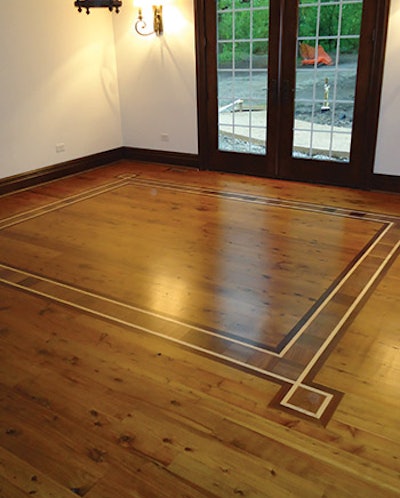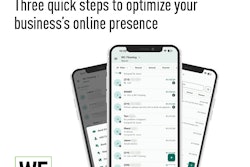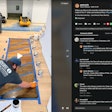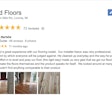
 Courtesy Signature Hardwood Floors
Courtesy Signature Hardwood Floors
Upselling is even more powerful when combined with "cross-selling." That's the promotion of add-on items, like a maintenance package, that enhance the value of the customer's initial purchase.
Difficult times make upselling and its cross-selling cousin all the more important. Just what are some effective extra nudges that contractors and retailers can employ? Here are some tips from sales experts around the country.
A Great Greeting
Upselling starts the minute a customer walks into your business or calls you on the phone. Address the individual in a way that creates a personal bond that leads to more buying. The actual words matter less than the spirit behind them. Both your voice and your body language should communicate to the customers that you are glad they are there.
Avoid the old standby "How may I help you?" It betrays more interest in selling merchandise than in filling the customer's needs.
Find Needs
Next comes determining the customer's real needs-springboards to success that are more important than your store's quality merchandise and service.
Suppose the customer, in response to your opening greeting, indicates an interest in a certain item. Remind yourself that the real topic is not that merchandise, but the related underlying customer need. Dr. Wolf Rinke, a management consultant in Clarksville, Md., suggests responding with a question that will help uncover that need. Here's one example: "Let me ask you: What was the last [xyz] you purchased? What was the reason why you bought that particular [xyz]?"
Perhaps the customer will respond with a statement of how the merchandise was used in a home or business setting. That customer activity, in turn, will suggest the real use of the merchandise. You will then consider how various related items of merchandise can satisfy that need.
The customer might also respond to your question with a statement such as, "It was the highest quality available at the time," or, "It was the least expensive one I could find." Either answer gives you a clue to the customer's current needs. "Past behavior is usually predictive of future behavior," Rinke says.
If the customer selects a lower cost item, acknowledge the value of the item and its attractive price tag. But also go on to emphasize how a higher priced, better-quality item will satisfy the customer's needs better by lasting longer, being easier to use, or performing at a higher level. Here, as in any discussion, forget about touting merchandise features. Instead, translate those features into benefits that will better satisfy customer needs.
Cross Sell
Moving the customer toward higher-priced merchandise is one sales driver. Another is suggesting related add-on items that enhance the first item's value. That's called "cross selling."
An item you suggest in cross selling should make it easier for the customer to enjoy the first product selected.
You can promote related items with a statement such as this: "One thing most people also get is a maintenance kit, since then they know they are using the right products to keep their floor looking beautiful." This emphasizes the benefit of the add-on item, and it implies a third-party endorsement that you lack if you simply say "I suggest you also buy this maintenance kit."
You can also introduce the related item couched in service terms such as "How about saving yourself a trip back in a couple of weeks? Would it be convenient to purchase [related item]?"
Promote the add-on by asking questions about how the customer will be using the first item, then show how the additional item will make the experience better. Remember, though, that the best add-on item practically sells itself: Its benefit will be obvious in its description.
Far from being upset that they purchased more than anticipated, customers will be happy you suggested solutions eliminating multiple shopping trips. Always remember that customers, even if they don't realize it, are really looking for salespeople to guide them.
Train the Staff
You probably know that salesmanship doesn't come naturally to many people. Just think of your frustrating experiences shopping at retail stores. So the question arises: How can you train your own staff to upsell and cross sell?
Start with an understanding: Many salespeople resist upselling because they think it is too "pushy." You must explain that you are not asking them to "make" the customer buy something. Instead, you are asking them to help customers get "more bang for the buck" spent on merchandise and services. Customers, in turn, will be pleased with the greater value received.
It's not a matter of teaching fancy techniques for closing, but emphasizing the fundamentals: smile, address people by their names, uncover needs and communicate in terms that testify to deep product knowledge.
Your employees cannot engage effectively if they lack that last item, says John Tschohl, director of the Service Quality Institute in Minneapolis. Employees, then, must learn everything possible about your products. "I estimate that from 50 to 75 percent of people don't know anything about the products they sell. A customer can tell that within seconds."
It boils down to getting the best return possible from your investment in people.
Set an example; employees will take their cue from you. "If the manager is not a role model, it's a problem," Tschohl says. "The manager needs to be the best of the best." That means knowing the products and engaging well with customers.
Follow Through
How well are you doing on your campaign to upgrade your sales skills? Survey your customers several times a year. Ask them what they like and don't like about your products and services. What can you do that will make their experience more satisfying?
Solicit employee feedback on new ways to engage customers and communicate your core goal to serve customer needs and exceed customer expectations. Encourage them to speak up and criticize if they see a policy is resulting in lost sales.
A concentrated campaign to train employees and solicit customer feedback will result in greater revenues. "Selling is not rocket science," Tschohl says. "But when you become good at it, you dramatically escalate sales."































